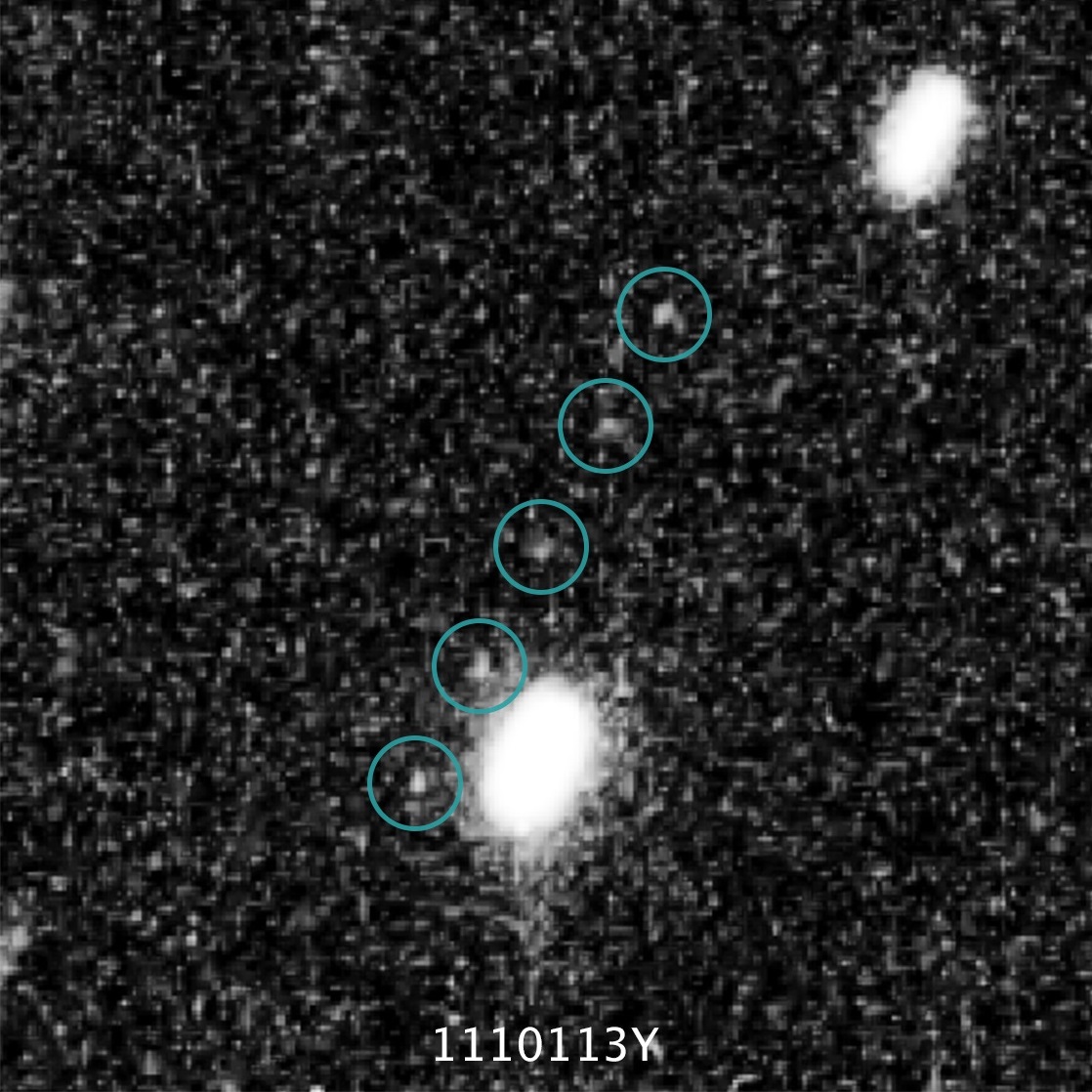The National Aeronautics and Space Administration (NASA) shared New Horizons’ recording of 1994 JR1, a 90-mile wide Kuiper Belt Object (KBO) that is currently orbiting three billion miles from the sun. This is the first thing New Horizons has passed since it historic fly-by Pluto last July.
New Horizons captured the JR1 image using its on-board Long-Range Reconnaissance Imager (LORRI) from 69 million miles away. The LORRI has taken an image of the KBO twice, on April 7 and 8. New Horizons will send data back from its Pluto flyby this year while it continues to pass the KBO 2014 MU69 in January 2019.
New Horizons is providing scientists with a closer look at 1994 JR1 and other KBOs. By putting together months of observations, NASA was able to locate the position of JR1 to within 1,000 kilometers, which is far better than other small KBOs.
This new information has disproved a theory that JR1 is a pluto quasi-satellite and has helped researchers learn more about its rotation period, as well as assess light curve information. By measuring the changing intensity of light that is reflected off the KBOs, scientists have calculated that a day on JR1 is 5.4 hours long.
“1994 JR1 has a rough surface with a 37omean topographic slope angle and has a relatively rapid rotation period of 5.47 hours,” the research team has said. “1994 JR1 is currently 2.7 astronomical units from Pluto; our astrometric points enable high-precision orbit determination and integrations which show that it comes this close to Pluto every 2.4 million years, causing Pluto to perturb 1994 JR1.”
These observations are great practice for possible close-up looks at about 20 more ancient KBOs that may come in the next few years, should NASA approve an extended mission,
Dr. John Spencer, a member of the New Horizons team, said in Sci News. By looking at KBOs, scientists now have a clearer perspective of space bodies that have never been seen or examined before, many of them billions of years old.
New Horizons was launched in 2006 on a landmark 3-billion-mile journey to Pluto. It made contact after its Pluto flyby, having navigated just 7,700 miles from the former planet. It sent back the first high-resolution images of Pluto’s surface and has since moved past to the Kuiper Belt.
Scientists are excited about the endless possibilities New Horizons has opened up, as it means there are more ancient objects to be discovered in the Kuiper Belt region. The New Horizons team has proposed an extension of the mission until 2021. According to NASA, New Horizons is now 3.24 billion miles from Earth and 230.5 million miles from Pluto, with all systems normal and healthy.
The findings have been published on The Cornell University Library’s online resources and will also be published in Astrophysical Journal Letters.
























